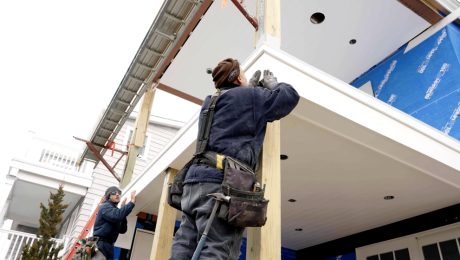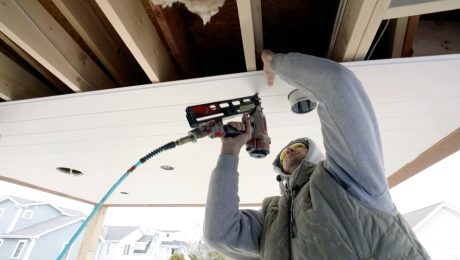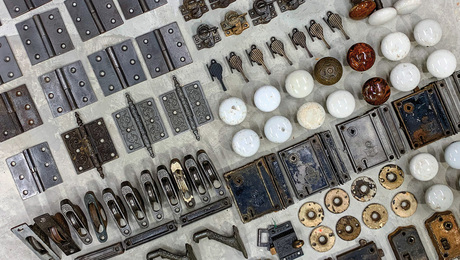Q:
Our 1939 house is sided with 1×8 cedar siding painted white. The siding was attached with box nails. Unfortunately, those nails were not galvanized, and the heads show through the paint as brown 1/4-in. circles. We are going to repaint the house soon and would like to know how to treat the rusty nail heads or the best way to hide these stains.
Edward Picard, Minneapolis, MN
A:
Brian Doherty, a painting contractor in Richmond, Virginia, replies: Short of removing and replacing every nail, you’ve got several options. However, the drawback to each is that no matter which you choose, the basic problem (nongalvanized nails) will still exist. Assuming that renailing your siding with stainless or galvanized nails is not in your plans, there are a few different ways to keep the symptoms at bay for as long as possible. The amount of time and effort that each of these repair strategies adds to the overall paint job varies greatly, but the more thorough (and time-consuming) your approach, the longer lasting your results will be.
If all you are doing is adding a fresh coat of paint over the old paint and you wish to keep those brown stains from showing through, the fix is quick and simple. Before applying the finish paint, lightly sand over each brown stain. Then apply several coats of a stainblocking primer/sealer with a rust inhibitor such as Kilz Total One (Masterchem; 800-325- 3552) (available at most paint-supply stores) on each spot in addition to your regular prepwork for painting. You’ll know that you’ve put on enough coats of primer when the stain stops bleeding through.
I recommend painting an area several inches around each stain as well. You say your house is now white. If you wish to change the color of your house, almost any primer you choose can be tinted close to the color of your finish coat to make it easier to cover with the finish paint.
If you plan to do a more extensive repainting and can expose each nail head in the process, you’ll probably get a few more years out of your final paint job. After uncovering the nail heads, remove the rust as best you can by scraping, sanding or wire-brushing, and spot-prime each nail head immediately with the same primer described above.
Yet another option that may be worth the time and expense, especially if you are doing the job yourself, is exposing each nail head, removing the rust and then setting each nail into the siding about 1/8 in. to 1/4 in. Apply primer over each nail, and fill each hole with a quality wood filler. After the holes are filled, spot-prime each area with a high-quality oil or latex primer before applying the finish paint. The laws of diminishing returns aside, this last option would probably give you the best longterm results.
So which course of action would I recommend? If the paint that’s on the house now is in relatively good shape and if you’re eventually going to repaint the house anyway, I’d begin with the first option. It’s the most cost-effective choice, and if the stains return in a few years, you can consider the other more drastic options.


























View Comments
The answer and advice is probably as good as you can do without removing the nail head. The rust is not usually just on the visible surface of the nail but also underneath the nail head. The best way to prep your house is to remove the rusted nail heads. The best method of removing them is with the drill bit from Nail Head Gone. After removing the nail head you can set a new stainless nail or screw if needed.